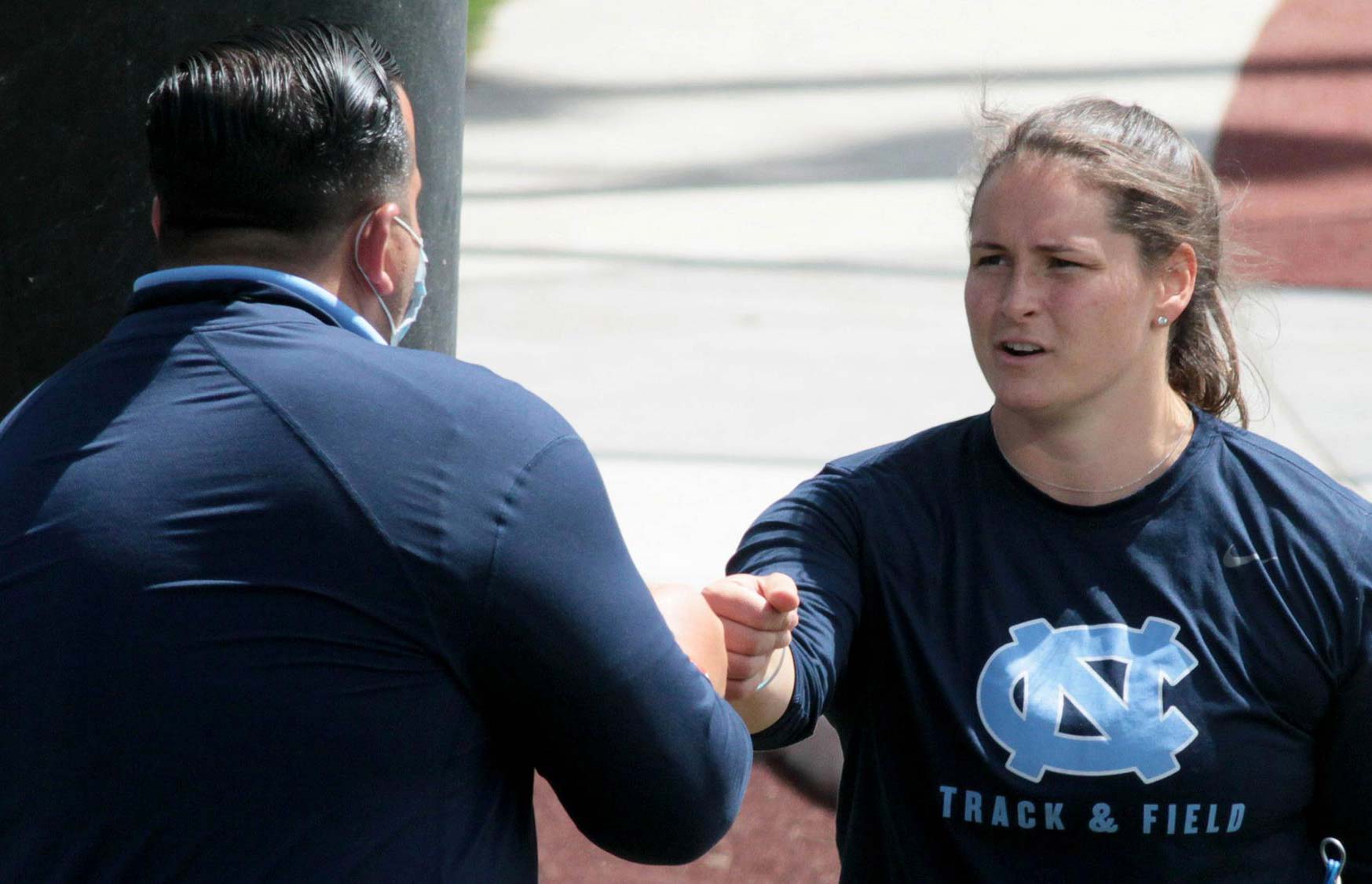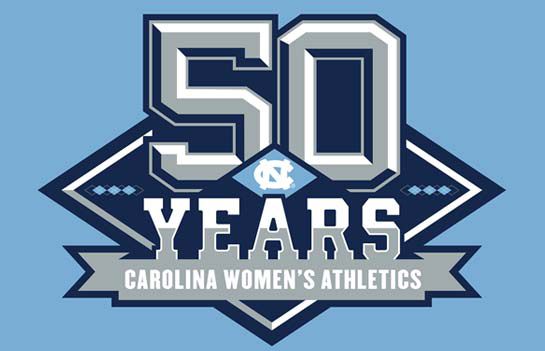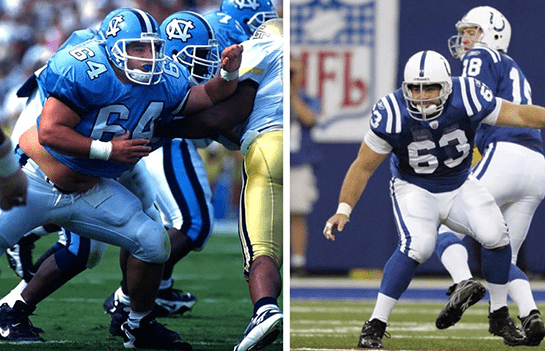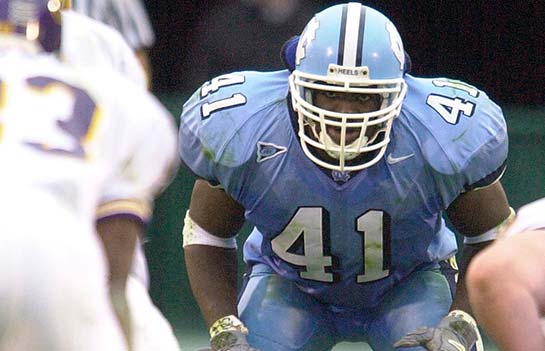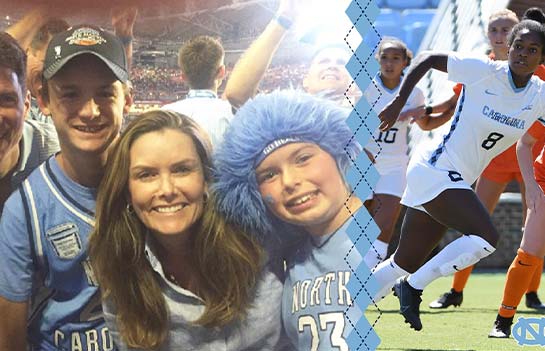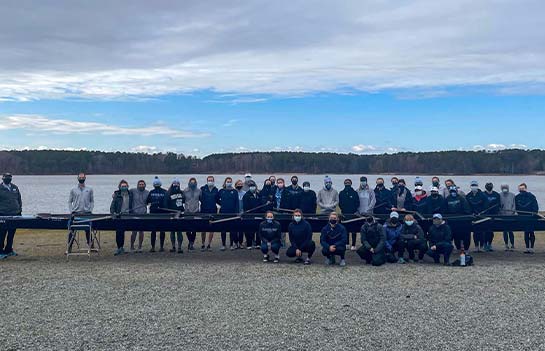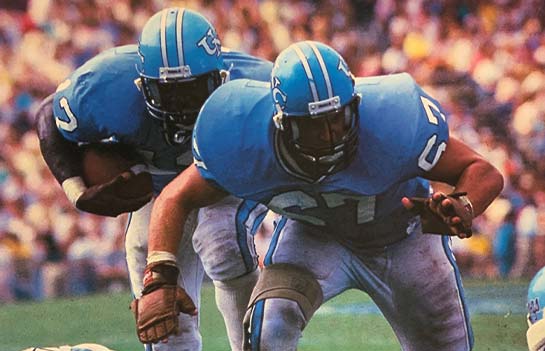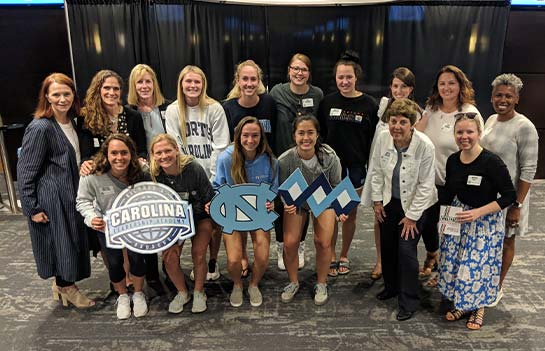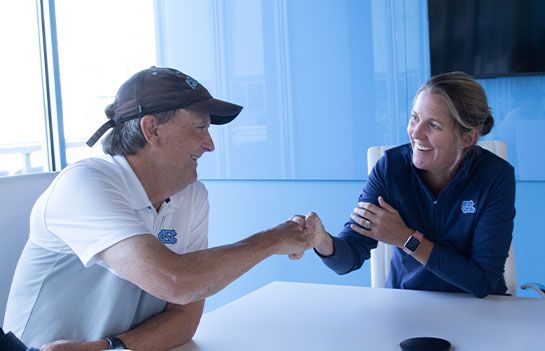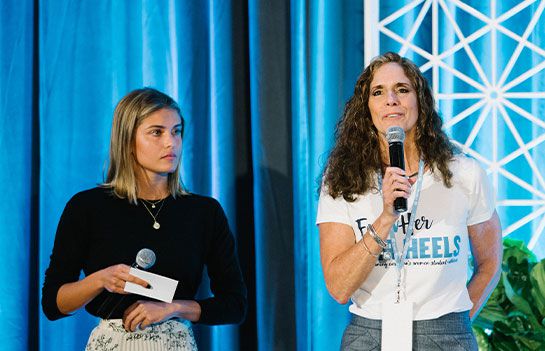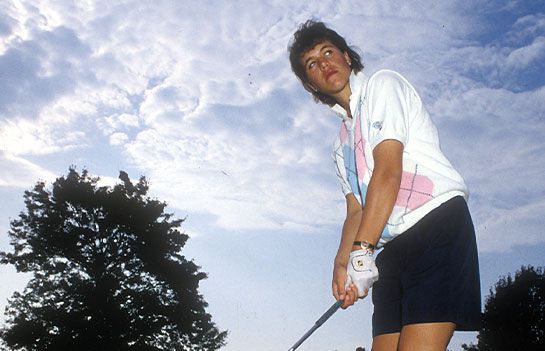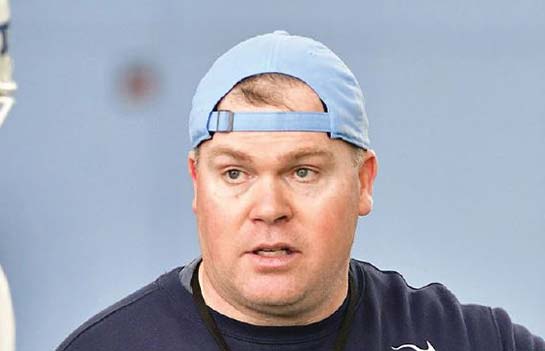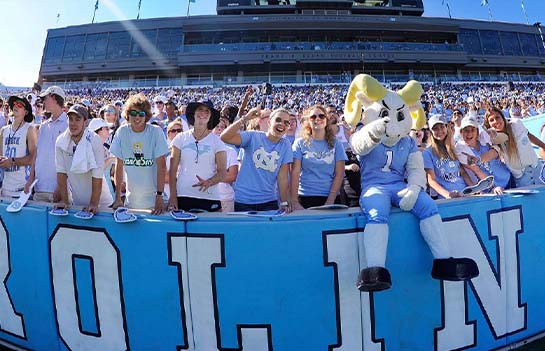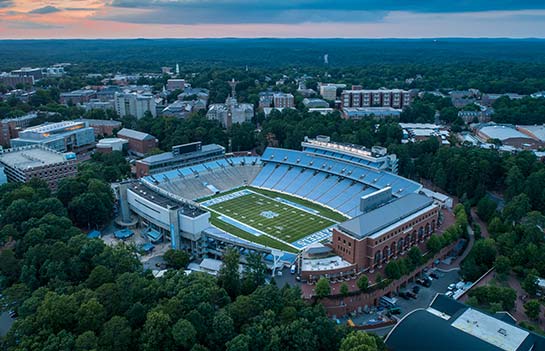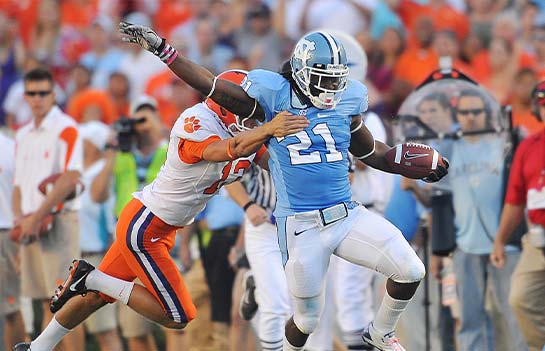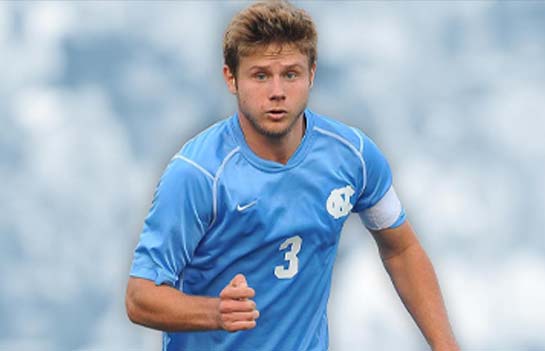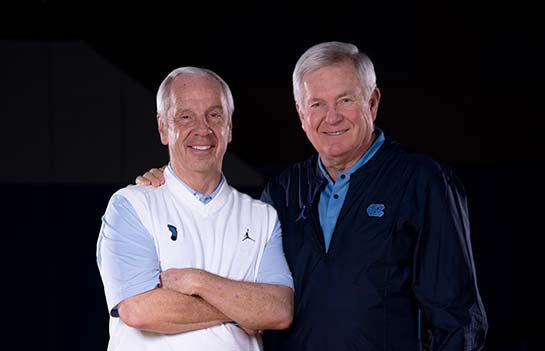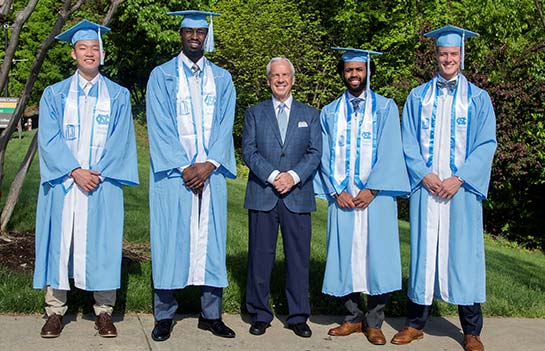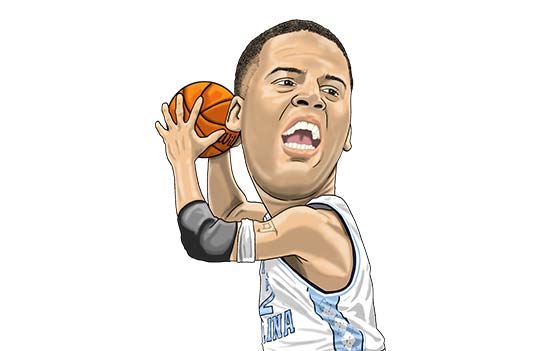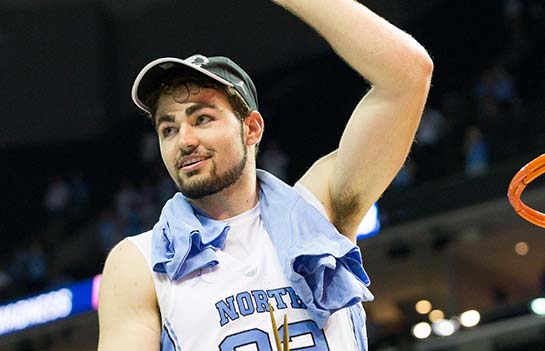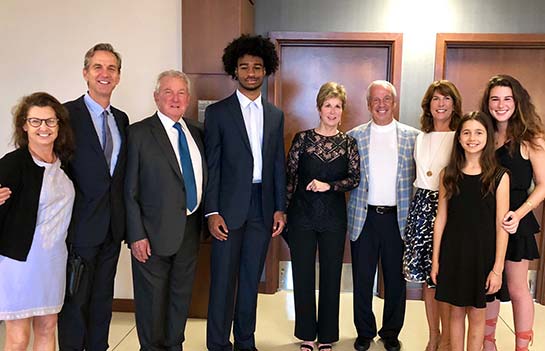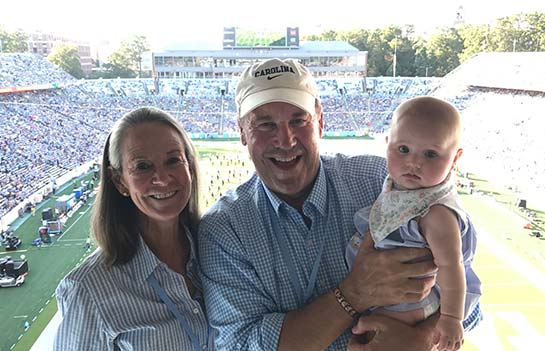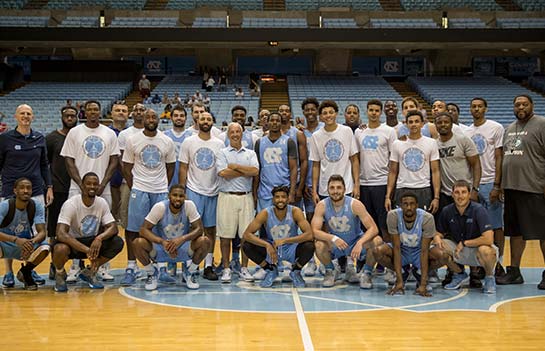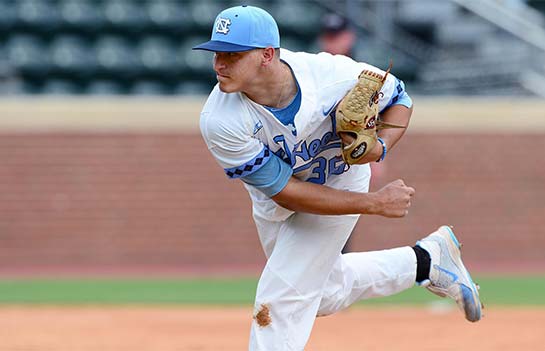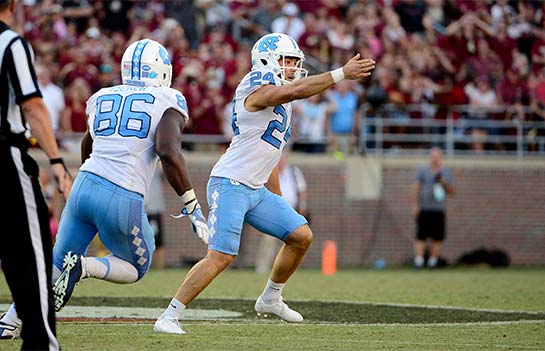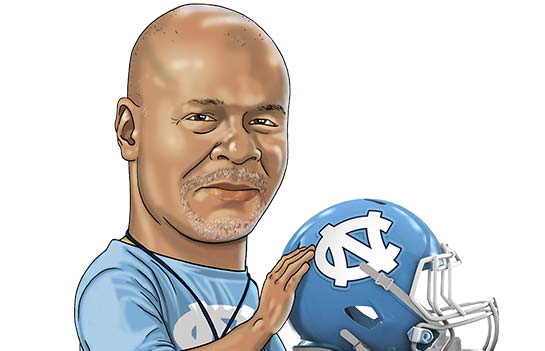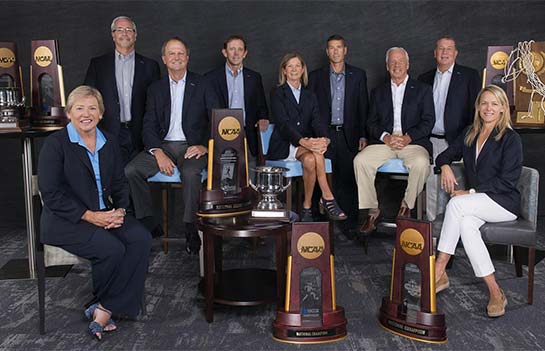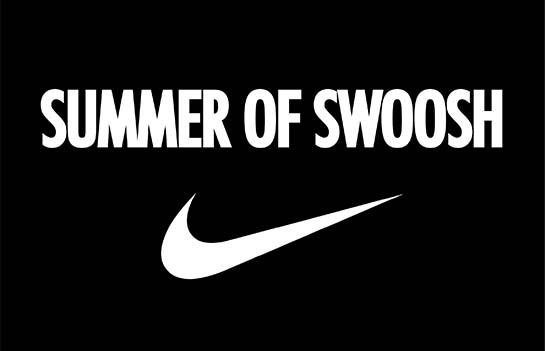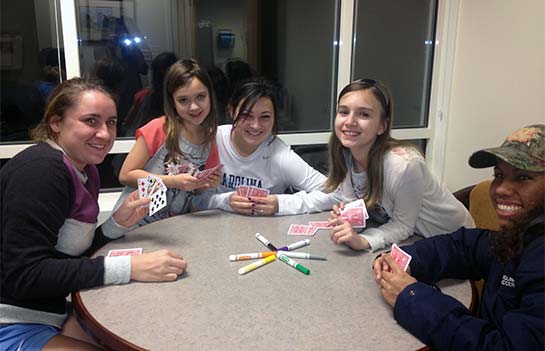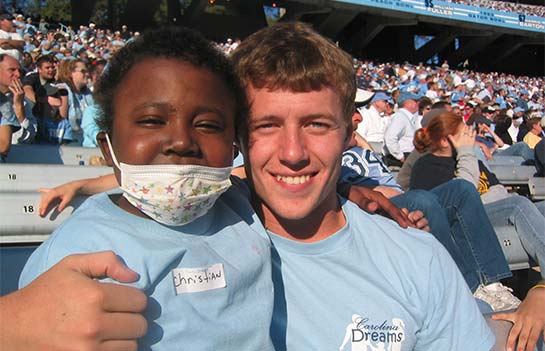MAKING THE OFFER
CAROLINA COACHES RELISH THE OPPORTUNITY TO CHANGE LIVES BY EXTENDING A SCHOLARSHIP OFFER
By: Lee Pace
When Tommy Thigpen was a senior at Potomac High in Dumfries, Va., in 1988, he received a simple typewritten letter from Coach Mack Brown delivered by the U.S. Postal Service offering him a scholarship to the University of North Carolina. The talented linebacker eventually said yes to Brown and the Tar Heels, played four years and, after a short stint in the NFL, went into college coaching.
Today the high school prospects Thigpen is recruiting for the Tar Heels received a seven-piece printed package from the Carolina football office on Aug. 1 of their senior year with their official "offer letter." One highlight of the package was a fold-out depicting a uniformed player viewed from the rear walking out of the tunnel at Kenan Stadium, the prospect's last name and favorite uniform number digitally edited onto the back of the jersey. There was also a QR code the player could scan with his phone, taking him to a YouTube video with former Tar Heels like Gio Bernard, Mitch Trubisky, James Hurst and others congratulating him on his offer and welcoming him – hopefully – to the Tar Heel family.
"It's all about the bells and whistles today," Thigpen says. "Now it's a letter inside of a letter with music coming out of it. It's flashy and fun and kids can put it on social media. You've got to come up with things that catch the eye of an 18-year-old. It's a long ways from my days as a kid. But you have to evolve. As a coach, you have to evolve."
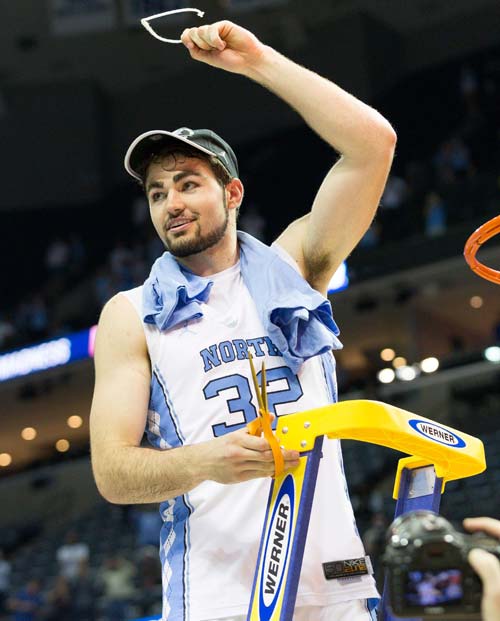
Two early prospects – and in fact, players who made verbal commitments to Carolina for the 2019 signing class – were shown soon after receiving their offers in videos they posted on Twitter. Each recruit opened the package like a six-year-old would a Christmas stocking and took the individual pieces out, the components carefully designed and printed and die-cut to fit together and adorned with color photos, the Air Jordan logo, images of Kenan Stadium and campus and stats extolling the virtues of a Carolina education. One of the recruits in his video wore a No. 23 basketball jersey and mimicked ripping his shirt open like Superman and said, "I can't wait to get to Chapel Hill. Go Heels!"
Extending and receiving the offer isn't quite as dramatic in other sports on the Carolina campus, though coach Roy Williams enjoys telling the story of offering Luke Maye a full ride in the spring of 2015. Maye, a 6-7 forward from Hough High in Cornelius, had attended the Carolina Basketball Camp and Williams liked his game and told Maye he could at least be a walk-on player at Carolina, perhaps going on scholarship after his freshman year.
"I was holding a scholarship for someone else, maybe it was more than one guy," Williams says of the 2014-15 recruiting season. "They didn't come, so I had a scholarship to give."
Williams called Maye and told him to go to his parents and tell them to give Maye a thousand dollars he could take to Myrtle Beach and blow over the weekend. Maye was taken aback.
Williams laughed.
"They'll look at you like you're crazy," Williams said. "Then you say, 'Coach Williams just called me and offered me the scholarship, and for an in-state student that's worth $25,000 (a year).' So the least they can do is give you a thousand. You're saving them $24,000."
Some coaches like Tar Heel volleyball coach Joe Sagula extend all their scholarship offers in person and a majority of the time when the prospect is visiting campus – either an exploratory visit at their own expense before their senior years or during an official visit during their final year of high school.
"That personal touch is important to me," says Sagula, who has won seven ACC titles. "I want it to be a special situation, something beyond me sending an email out. I want to sit down and look them in the eye, hopefully with their parents there, and make sure they understand this is a significant moment, that we think they are special and important and we want them to come to Carolina."
Sagula says it's not often he gets an immediate "yes," but one prospect from Charlotte visiting in the fall of 2018 called half an hour after leaving Chapel Hill with her father to say she was accepting the offer.
"I said, 'Are you sure?'" Sagula remembers. "I told her, 'I do not want you to make an emotional decision. I want you to make a solid decision that is right for you.' She answered that she had already spoken to her club coach, her high school coach, her mom, and she and her dad had talked in the car. She said, 'This where I want to be.' That was meaningful, that was a solid, family decision."
There are actually two kinds of sports and the scholarships they offer in Division I athletics. There are "headcount" sports, where the number of players on scholarship is limited and each player receives a full scholarship. Those sports include football, men's and women's basketball and women only in volleyball, track and tennis. Football, for example, has 85 scholarships and only 85 players can be on scholarship. Volleyball has 12, women's track and field 18 and women's tennis eight.
Others are "equivalency sports" – the program can use the equivalency of, for example, 12 scholarships in men's lacrosse and six in women's golf, and split the monetary value up and spread the scholarships out at the coach's discretion. Women's soccer coach Anson Dorrance has 14 scholarships that he generally divides among 20 to 22 players on a 30-player roster. Many players also get financial aid that, combined with the athletic scholarship assistance, can essentially equal the value of a full scholarship.
Coaches in headcount sports have it easy in the sense that a player is either on scholarship or not.
Coaches in equivalency sports have a much more complicated accounting and management process – who gets scholarship support and how much, and how does that ebb and flow over the student-athlete's career at Carolina?
"I swear I stare at that spreadsheet probably two or three times a day," says Andrew DiBitetto, now in his second year as men's golf coach. "Because you're just always trying to project out and you're looking at the rankings and you're recruiting kids and you're evaluating kids. Basically you've got this puzzle and you're trying to find a way to kind of put the pieces altogether."
DiBitetto has 4.5 scholarships for men's golf and coach Joe Breschi has 12.6 scholarships in men's lacrosse (both the NCAA maximum), and each say they use the carrot of scholarship aid as motivation for players to improve athletically and academically.
Austin Pifani was a four-year starter for the Tar Heel lacrosse team from 2014-17, earned All-America honors and is regarded as one of the best defensemen in Tar Heel history. He was on partial scholarship for two years and then upgraded to full scholarship his last two years.
"A full scholarship in our sport is rare," Breschi says. "But with what he was accomplishing on the field and in the classroom and as a leader on our team, I just said, 'Look, you deserve it.'"
DiBitetto cites the "real world" and the fact that someone in business who performs well or exceeds expectations can expect a bonus.
"We try to save a percentage so if a guy, for example, like Preyer Fountain improves 1.94 shots per round last year, we have something tangible we can reward him with," he says. "It's more than a pat on the back. It's saying we recognize and respect the commitment and hard work. Here's a little reward for you and your family."
The golf program has also seen the interesting development of a player's family being well established enough financially that the parents could forego scholarship money and tell DiBitetto to use it on someone else to help make the program stronger – not unlike New England QB Tom Brady sacrificing some salary to allow the Patriots to sign some better players around him.
"Those parents said, 'Go get some other players of high caliber quality and help us win a national championship,'" DiBitetto says. "So that has been very helpful, and I honestly believe you kind of need some stuff like that to happen in order to win in men's golf. Because the reality of the situation is, there's just not enough for everybody."
More Stories
The impact of giving comes through in wonderful stories about Carolina student-athletes and coaches, as well as the donors who make their opportunities possible. Learn more about the life-changing impact you can have on a fellow Tar Heel through one of the features included here:
